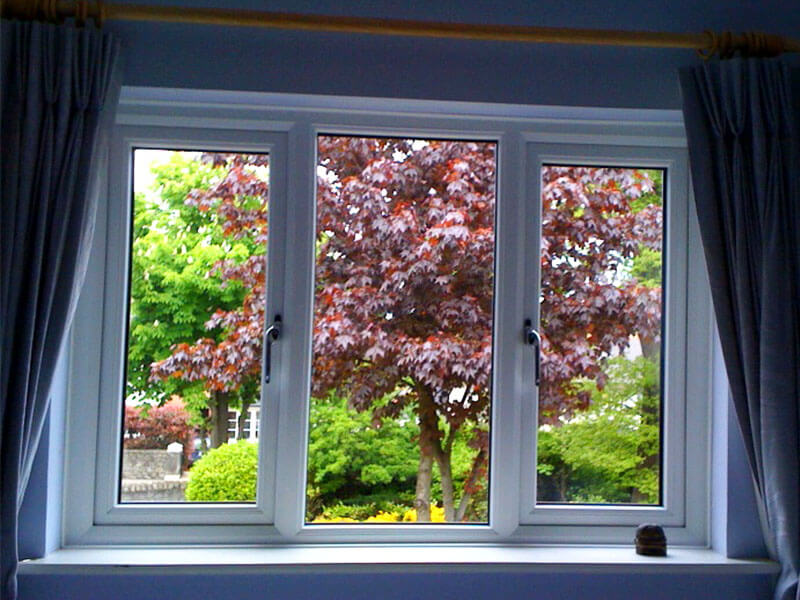
Triple glazing is an advanced window technology that has gained popularity in recent years due to its energy efficiency and thermal performance. Unlike traditional double glazing, which consists of two panes of glass, triple glazing features three panes, providing enhanced insulation and soundproofing. In this article, we will explore the benefits of triple glazing, its applications, and some considerations to keep in mind when deciding whether it is the right choice for your home or building.
What is Triple Glazing?
Triple glazing consists of three layers of glass separated by two insulating spaces filled with gas, typically argon or krypton. The layers of glass are sealed together to create a barrier that minimizes heat transfer and improves energy efficiency. The technology is designed to reduce heat loss in winter and keep interiors cooler in summer, making it an attractive option for homeowners and builders aiming to reduce energy consumption and enhance comfort.
Benefits of Triple Glazing
- Improved Energy Efficiency: One of the primary advantages of triple glazing is its superior energy efficiency. The additional pane of glass and the insulating gas between the layers significantly reduce heat loss, which can lead to lower heating bills. In colder climates, triple glazing can be a valuable investment, helping homeowners maintain a comfortable indoor temperature while reducing reliance on heating systems.
- Enhanced Sound Insulation: Triple glazing also offers better sound insulation compared to double glazing. The extra pane of glass and the wider air gap between the panes help to block external noise, making it an ideal choice for homes located in noisy urban areas or near busy roads. This can contribute to a more peaceful living environment.
- Increased Security: With three layers of glass, triple glazing provides enhanced security for homes. The added strength of the multiple panes makes it more difficult for intruders to break through, offering homeowners an additional layer of protection.
- Reduced Condensation: Triple glazing can help reduce condensation on windows. The inner pane of glass tends to be warmer than in double-glazed windows, which minimizes the likelihood of moisture forming on the surface. This can help prevent mold growth and maintain healthier indoor air quality.
- Environmental Benefits: By improving energy efficiency, triple glazing can contribute to a reduction in carbon emissions. Homes that consume less energy for heating and cooling have a lower environmental impact, making triple glazing an eco-friendly choice for environmentally-conscious homeowners.
Applications of Triple Glazing
Triple glazing is suitable for a variety of applications, including residential homes, commercial buildings, and even in passive house designs. It is particularly beneficial in regions with extreme temperatures, where energy efficiency is a top priority. Many modern buildings, especially those aiming for CleanPro sustainability certifications, are incorporating triple glazing as a standard feature.
In addition to residential use, triple glazing is increasingly being used in schools, hospitals, and other commercial buildings where energy efficiency and sound insulation are critical. The technology is also gaining traction in the construction of high-performance buildings that prioritize sustainability and occupant comfort.
Considerations When Choosing Triple Glazing
While triple glazing offers numerous benefits, there are several factors to consider before making the switch:
- Cost: One of the main drawbacks of triple glazing is its higher upfront cost compared to double glazing. The materials and manufacturing processes involved in producing triple-glazed windows can make them more expensive. Homeowners need to weigh the long-term energy savings against the initial investment to determine if it is a worthwhile upgrade.
- Weight: Triple-glazed windows are heavier than their double-glazed counterparts due to the additional pane of glass. This can complicate installation and may require additional structural support in some cases. Homeowners should consult with professionals to ensure their frames and structures can accommodate the added weight.
- Installation: Proper installation is crucial for maximizing the benefits of triple glazing. Poorly installed windows can lead to air leaks, reducing energy efficiency and negating the advantages of the technology. It is essential to hire experienced professionals for the installation process.
- Aesthetics: Some homeowners may be concerned about the appearance of triple glazing. While modern designs can be sleek and stylish, the thicker frames required to support the additional glass can impact the overall aesthetics of a building. It is important to consider how triple glazing will fit into the design of your home.
- Availability: Depending on the region, triple glazing may not be readily available. Homeowners should research local suppliers and manufacturers to ensure they can find high-quality triple-glazed windows that meet their needs.
Conclusion
Triple glazing represents a significant advancement in window technology, offering numerous benefits in terms of energy efficiency, sound insulation, security, and environmental impact. While the initial cost may be higher than traditional double glazing, the long-term savings on energy bills and the enhanced comfort it provides can make it a worthwhile investment for many homeowners.
As energy efficiency becomes increasingly important in the face of climate change, triple glazing is likely to become a more common feature in residential and commercial buildings alike. If you are considering upgrading your windows, it may be worth exploring the advantages of triple glazing and consulting with professionals to determine if it is the right fit for your home or building. With the right choice, you can enjoy a more comfortable, quieter, and energy-efficient living space for years to come.







